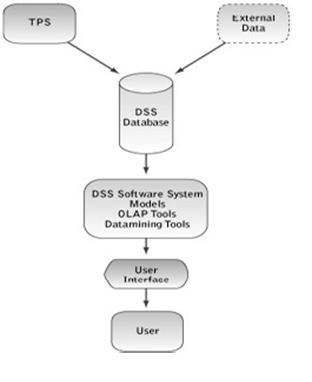Decision Support Systems (DSS) help executives make better decisions by using historical and current data from internal Information Systems and external sources. By combining massive amounts of data with sophisticated analytical models and tools, and by making the system easy to use, they provide a much better source of information to use in the decision-making process. Decision Support Systems (DSS) are a class of computerized information systems that support decision-making activities. DSS are interactive computer-based systems and subsystems intended to help decision makers use communications technologies, data, documents, knowledge and/or models to successfully complete decision process tasks. While many people think of decision support systems as a specialized part of a business, most companies have actually integrated this system intoContinue reading
Information Systems Basics
Data Processing Methods
1. Batch Processing. Batch processing is a technique in which data to be processed or programs to be executed are collected into groups to permit convenient, efficient, and serial processing. It is the simplest form of data processing. With this method, data is entered to the information flow in large volumes, or batches. That is, the processing by computer is performed periodically, at specified time intervals (weekly, monthly, etc) when large volumes are accumulated. Daily transactions in a business establishment, for example, may be batch processed on a weekly basis. Instead of being processed periodically when a sufficient volume has been accumulated. Advantages of batch processing are: Economical when a large volume of data must be processed and The mostContinue reading
Areas of Data Processing
Data processing is the manipulation of data into a more useful form. It is the modern name for paperwork and involves the collecting, processing, and distributing of facts and figures to achieve a desired result. Data processing includes not only numerical calculations but also operations such as the classification of data and the transmission of data from one place to another. In general, we assume that these operations are performed by some type of machine or computer, although some of them could also be carried out manually. Data processing system refers to the equipment or devices and procedures by which the result is achieved. Read More: Concept of Data Processing Data processing may be classified as either scientific or businessContinue reading
Data Processing Operations
A data processing procedure normally consists of a number of basic processing operations performed in some order (not necessarily the order of their description below). The means of performing the processing operation vary according to whether manual, electro-mechanical, or electronic methods are used. Many business find that the best solution to their processing requirements is to use a combination of methods; e.g., manual may be used for small-volume jobs while computers may be used for large-volume tasks. Recording. Recording refers to the transfer of data onto some form of documents. It relates to the documentation of intermediate figures and facts and resulting from calculations. For example, in computing gross pay, the numbers of hours worked are multiplied by the hourlyContinue reading
Concept of Data Processing
Data is defined as any collection of facts. Thus, sales reports, inventory figures, test scores, customers’ names and addresses, and weather reports are all examples of data. Note that data may be numerical (e.g, inventory figures and test scores) or they may be numerical (e.g. , names of students and addresses, drawings). Data processing is the manipulation of data into a more useful form. It is the modern name for paperwork and involves the collecting, processing, and distributing of facts and figures to achieve a desired result. Data processing includes not only numerical calculations but also operations such as the classification of data and the transmission of data from one place to another. In general, we assume that these operationsContinue reading
Information Systems in Various Levels of Modern Organizations
The INFORMATION SYSTEM plays a major role in the organization by satisfying the diverse needs through a variety of systems such as Query systems, Analysis systems, Modeling systems and Decision support systems. It helps the Clerical personnel in transaction processing and answers their queries on data pertaining to transaction. It helps junior management by providing operational data for planning and control, and helps them in Decision-making. It helps the Middle management in short-term planning, target setting and controlling business functions. It helps Top management in goal setting, planning and evolving business plans and their implementation. OPERATIONAL-LEVEL SYSTEMS At the operational level are transactions processing systems through which products are designed, marketed, produced, and delivered. These systems accumulate information in databasesContinue reading

